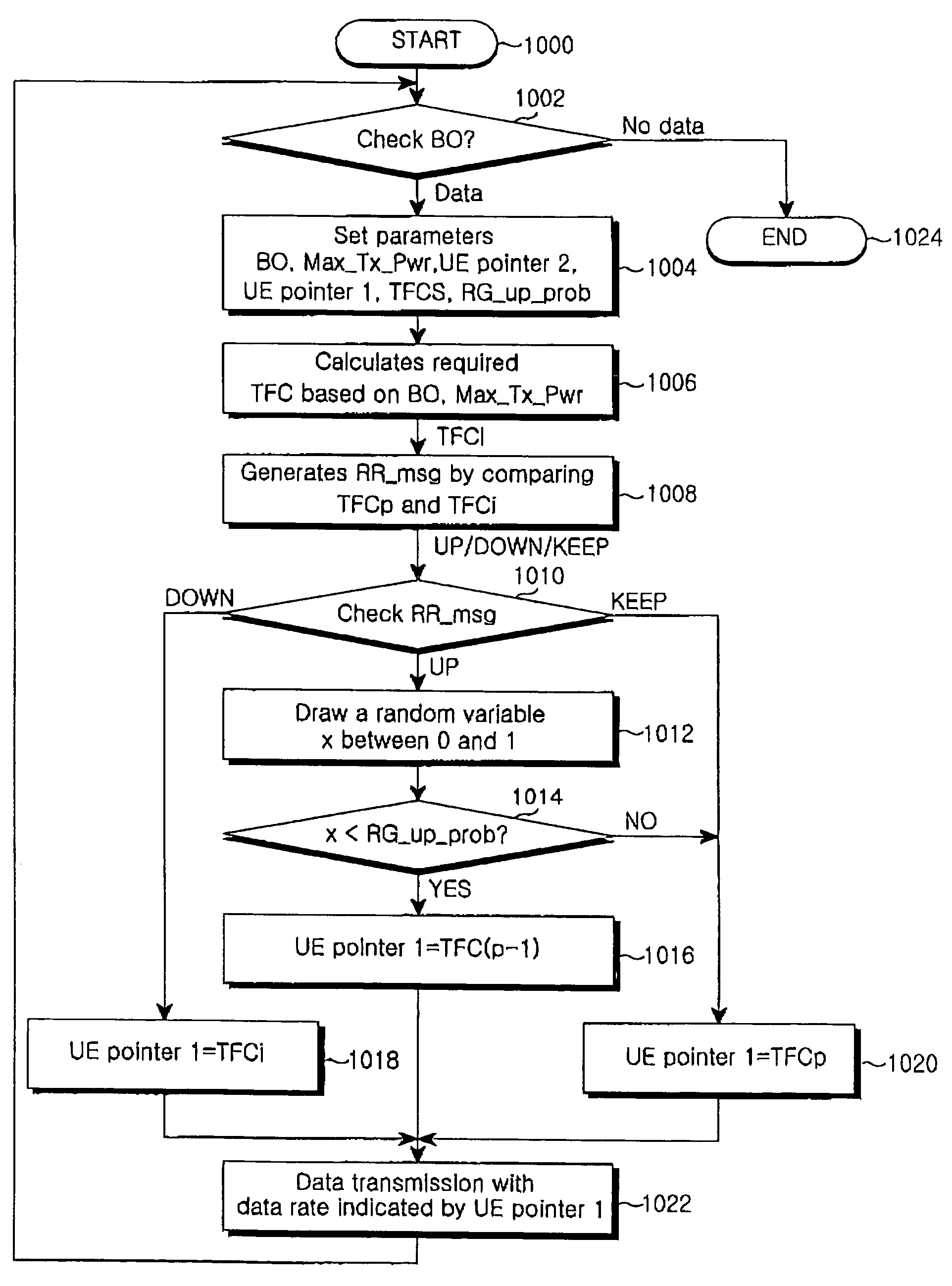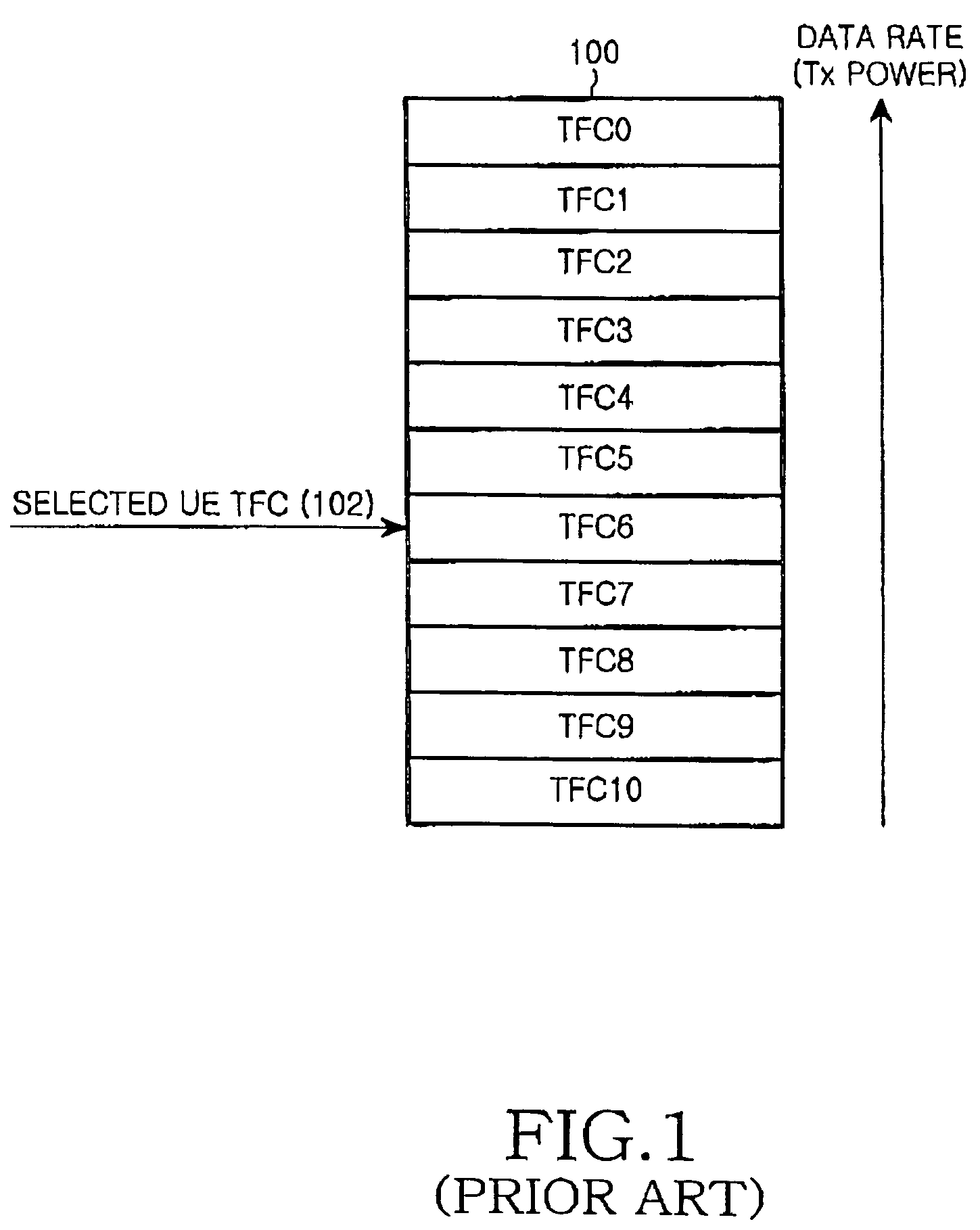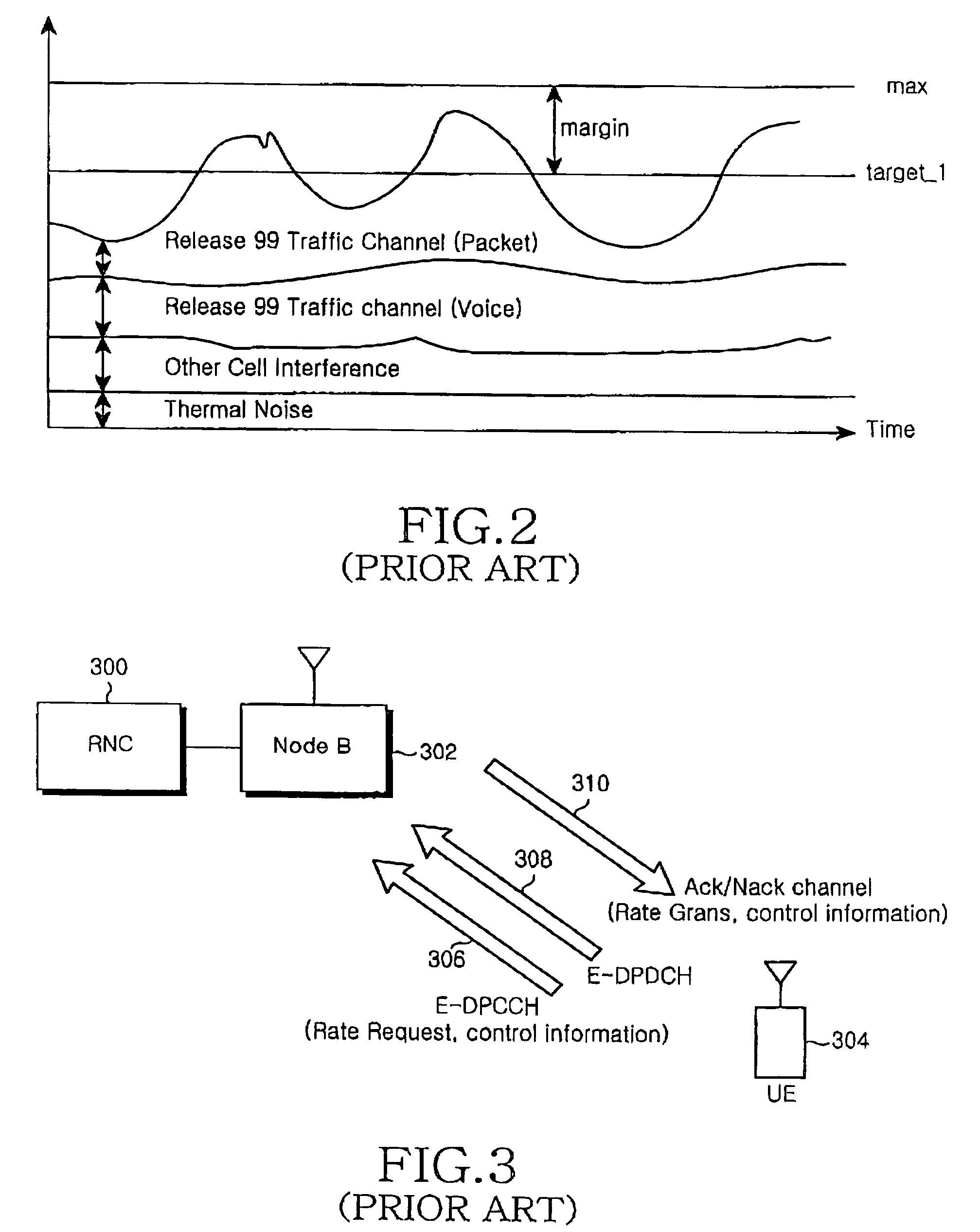Apparatus and method for data rate scheduling of user equipment in a mobile communication system
a mobile communication system and data rate scheduling technology, applied in the field of data transmission of mobile communication systems, can solve the problems of large variance of interference on packet channels according to time, difficult to precisely reflect the rise in noise, and take a long time, so as to prevent system capacity reduction, prevent time delay, and efficiently assign radio resources
- Summary
- Abstract
- Description
- Claims
- Application Information
AI Technical Summary
Benefits of technology
Problems solved by technology
Method used
Image
Examples
first embodiment
[0059]In other words, in the present invention, the UE determines the TFC based on the information transmitted from the Node B, as opposed to what is done in the prior art.
[0060]FIG. 9 is a block diagram showing a construction of a UE pointer 1 selection unit of the UE according to the first embodiment of the present invention.
[0061]Referring to FIG. 9, the UE pointer 1 selection unit 900 includes a rate request unit 902 and a rate grant unit 904. The rate request unit 902 determines the data rate necessary for the UE and the rate grant unit 904 detects whether the data rate determined by the rate request unit 902 is available or not.
[0062]The rate request unit 902 receives a Buffer Occupancy (BO) 906, a maximum allowed transmission power 908, and the UE pointer 2 (910) from the Node B, and calculates an optimum data rate based on the received information. In calculating the optimum data rate, an optimum TFC is selected using the TFCS, i.e., the UE pointer 2. In other words, the rat...
second embodiment
[0069]Hereinafter, a structure of a TFCS according to the present invention will be described in detail with reference to FIG. 11.
[0070]The TFCS 1100 shown in FIG. 11 includes TFC0 through TFC10. TFC0 represents the highest data rate and TFC 10 represents the lowest rate. Although the TFCS shown in FIG. 11 employs TFCs in 11 steps, more steps of TFCs may be employed.
[0071]The Node B pointer 1108 is transmitted to the Node B by the RNC and is a value determined based on the measurement of the noise rise in multiple Node Bs by the RNC. The UE pointer 2 transmitted from the Node B to the UE implies a maximum data rate at which the UE can transmit data. That is, the UE pointer 2 (1102) is assigned to the UE by the Node B in consideration of the noise rise of the Node B, etc. FIG. 11 shows that the Node B pointer 1108 and the UE pointer 2 (1102) are set as TFC2.
[0072]A UE pointer 1 (1104) is determined by the UE based on the information transmitted from the Node B and is used in actual t...
PUM
 Login to View More
Login to View More Abstract
Description
Claims
Application Information
 Login to View More
Login to View More - R&D
- Intellectual Property
- Life Sciences
- Materials
- Tech Scout
- Unparalleled Data Quality
- Higher Quality Content
- 60% Fewer Hallucinations
Browse by: Latest US Patents, China's latest patents, Technical Efficacy Thesaurus, Application Domain, Technology Topic, Popular Technical Reports.
© 2025 PatSnap. All rights reserved.Legal|Privacy policy|Modern Slavery Act Transparency Statement|Sitemap|About US| Contact US: help@patsnap.com



